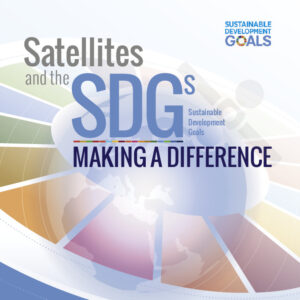Satellite operators already make a huge impact to communications in developing nations thanks to the ubiquitous coverage of their satellites. Services in developing nations are very often enabled via the C-band thanks to the robustness of the signal in the equatorial rain belt, where heavy rainfall can cause other satellite signals to fade and affect their reliability. Some services are however effectively supplied also using the Ku and now the Ka band.
Access to telecommunications is key to ensuring that every person has the opportunity to participate in the global marketplace and that each individual can reach the potential of their human capital. In the knowledge economy, a gap has emerged between those who have unlimited access to all modern communications’ tools and those who do not. Bridging this ‘Digital Divide’ will not just invigorate remote individuals and communities; it will also help to invigorate national and regional economies.

Satellite technology can immediately provide not only basic voice connectivity, but is often the only solution for citizens to gain access to increasingly complex data services. Internet access at broadband speeds can allow people to exchange information and share experiences, becoming fully integrated into the digital world – all via satellite.
Education
Schools all over the world are incorporating virtual learning environments and educational technologies to support learning and teaching. E-learning allows classrooms full of students to sit in front of a monitor and receive a lesson given by a teacher hundreds, or even thousands, of kilometres away. Students in remote parts of the world no longer have to travel long distances or re-locate to receive an education but can stay with their families while gaining the benefits of an education.
Innovations in satellite technology and low cost receiving antennae are making satellite services increasingly available. Satellite services are advantageous where other networks are not available due to poor infrastructure or reception and for multimedia push delivery to a large dispersed population. The provision of e-learning to remote students by satellite is consistent and occurs faster than other currently available methods of transmission. And the teaching does not only take the form of watching teachers give lessons – very large-sized web-based training modules and multi-media-rich transmissions can easily be transmitted using satellite technology allowing students access to large amounts of data. There is virtually no limit to the number of remote locations that can receive satellite transmission, provided they have the necessary equipment.


Health
Satellite Broadband increases access to reliable, cost-effective, high-speed broadband services that are critical for the delivery of broadband-enabled healthcare solutions all over the world. Telehealth and telemedicine services are vital to the healthcare system. With a growing and aging population globally, the demand for medical services is increasing, putting a strain on existing healthcare frameworks. Satellite allows these services to reach remote parts of a country and provide quality healthcare to those in need, so avoiding the need for patients to relocate to main cities.
Financial Inclusion
Access to financial, banking and money transfer services is a prerequisite for economic growth, in particular, in emerging economies. In many countries, the lack of reliable and affordable telecommunications prevents the ubiquitous roll out of financial outlets. In such remote areas, satellite communications are providing affordable, high quality solutions to enable money transfer and connect bank agencies and ATMs. These services help transform the socioeconomic lives of citizens through financial literacy and access.
Broadband For All
Satellite equipment is eligible for European Union public funding support. The Voucher Scheme is therefore widely promoted by the European Commission as a useful and efficient “demand stimulation” measure that helps to close the Digital Divide by covering the cost of purchase and installation of this equipment in Europe. Such schemes are feasible in terms of implementation and respect EU funding rules. They are however more flexible to implement for public authorities as they avoid possible long & bureaucratic tender procedures and they empower users who want to be online.
Under Find your local distributor (broadband): You can now easily find your local distributor in any EU Member State.



